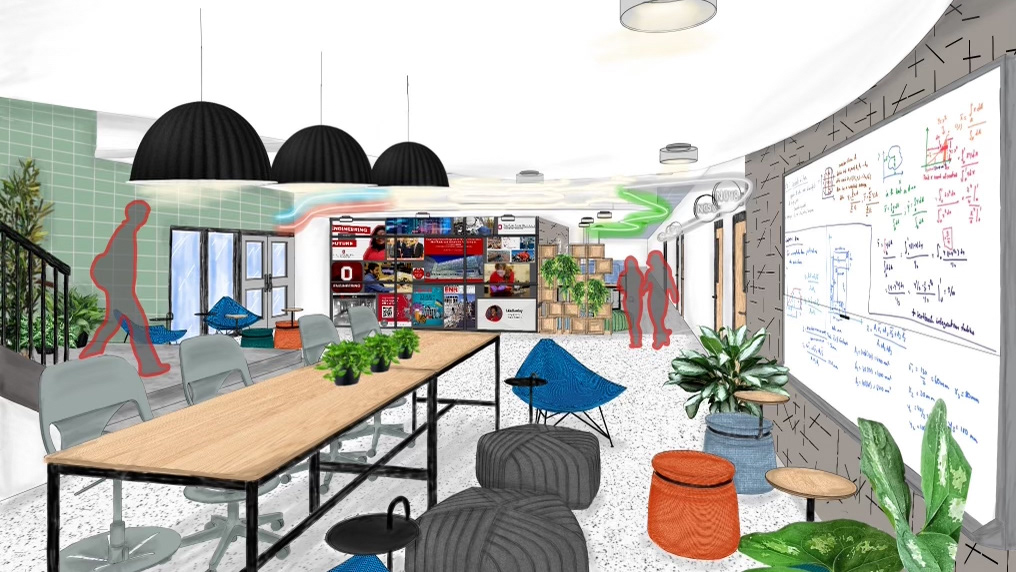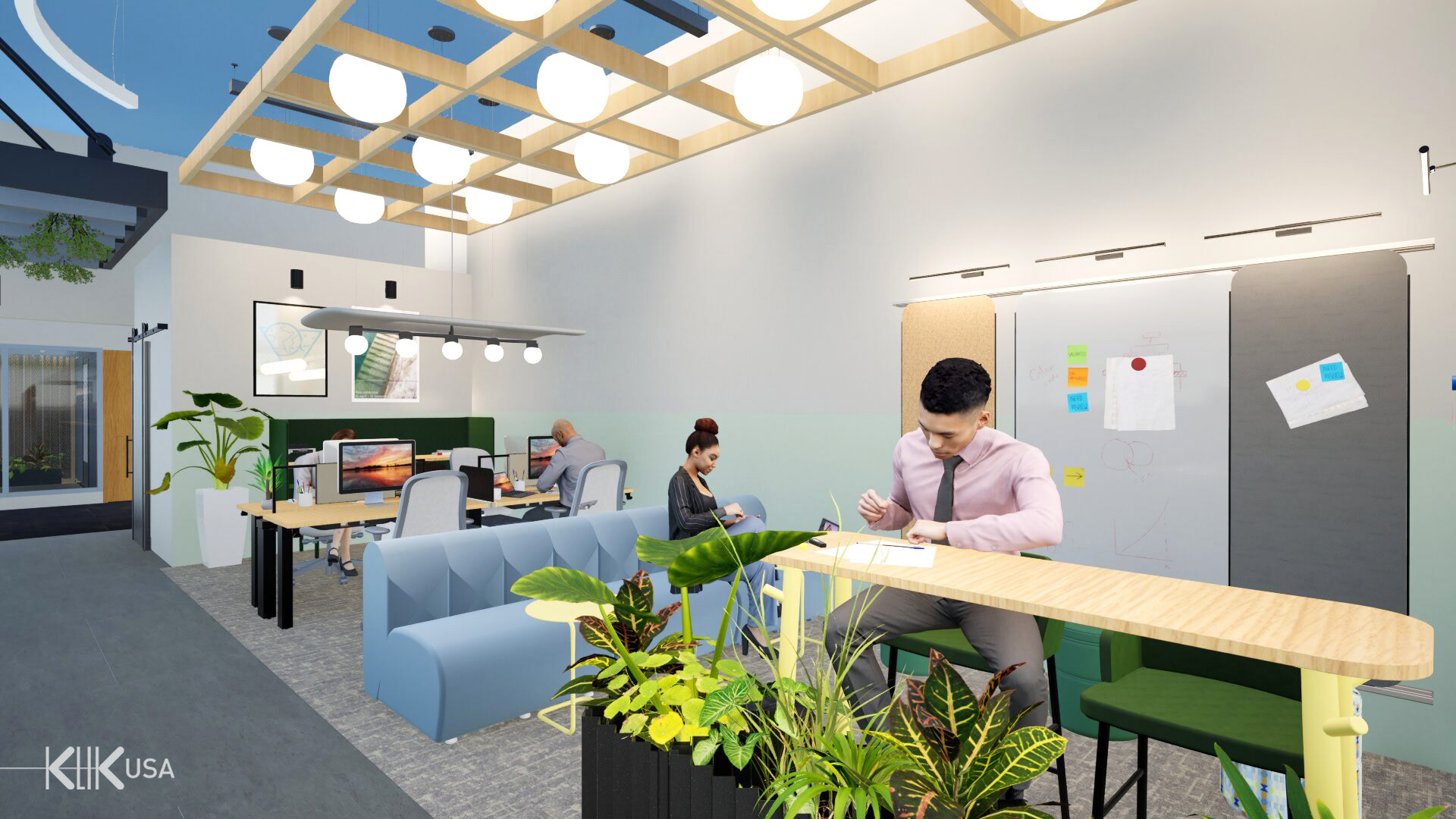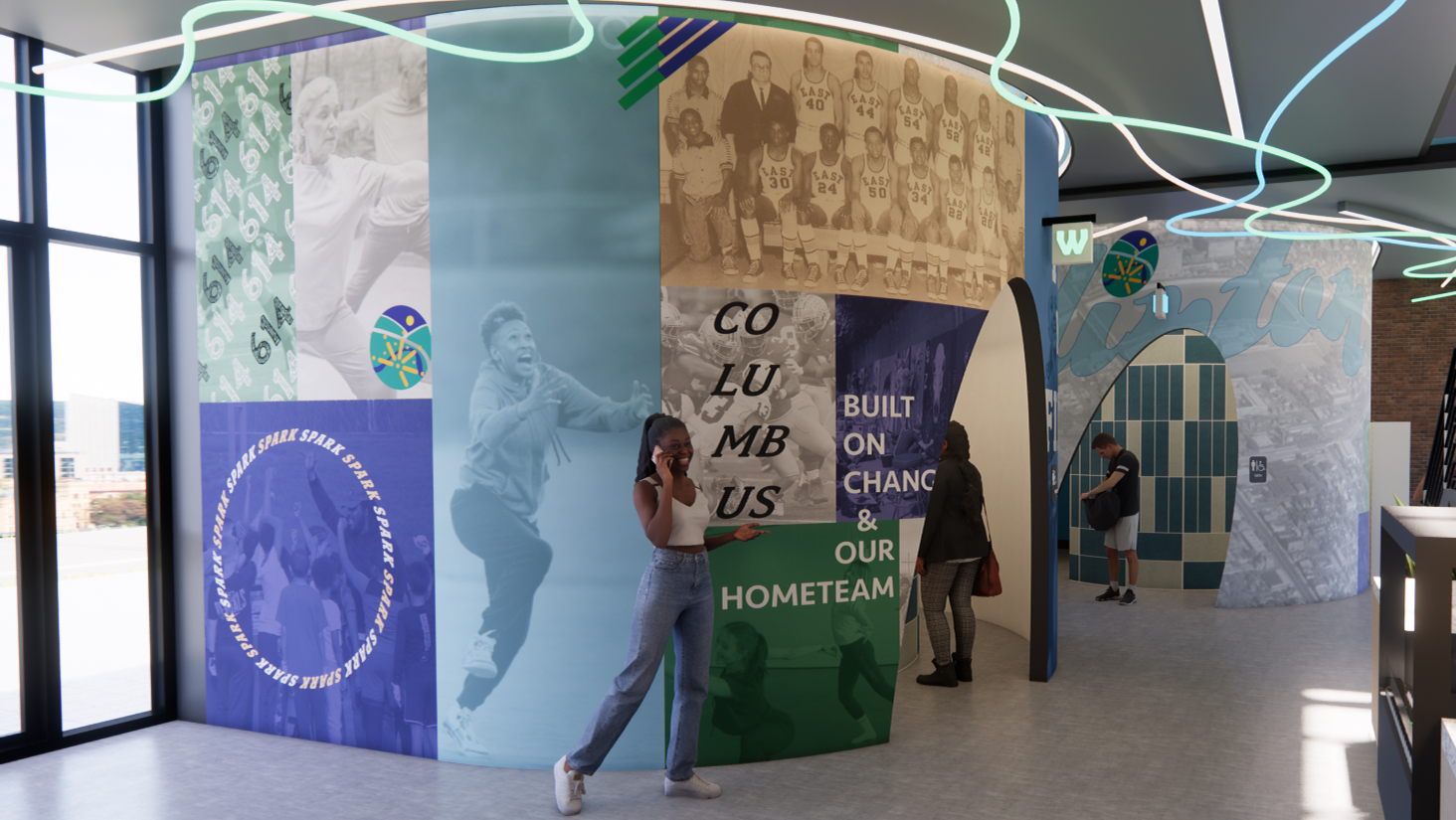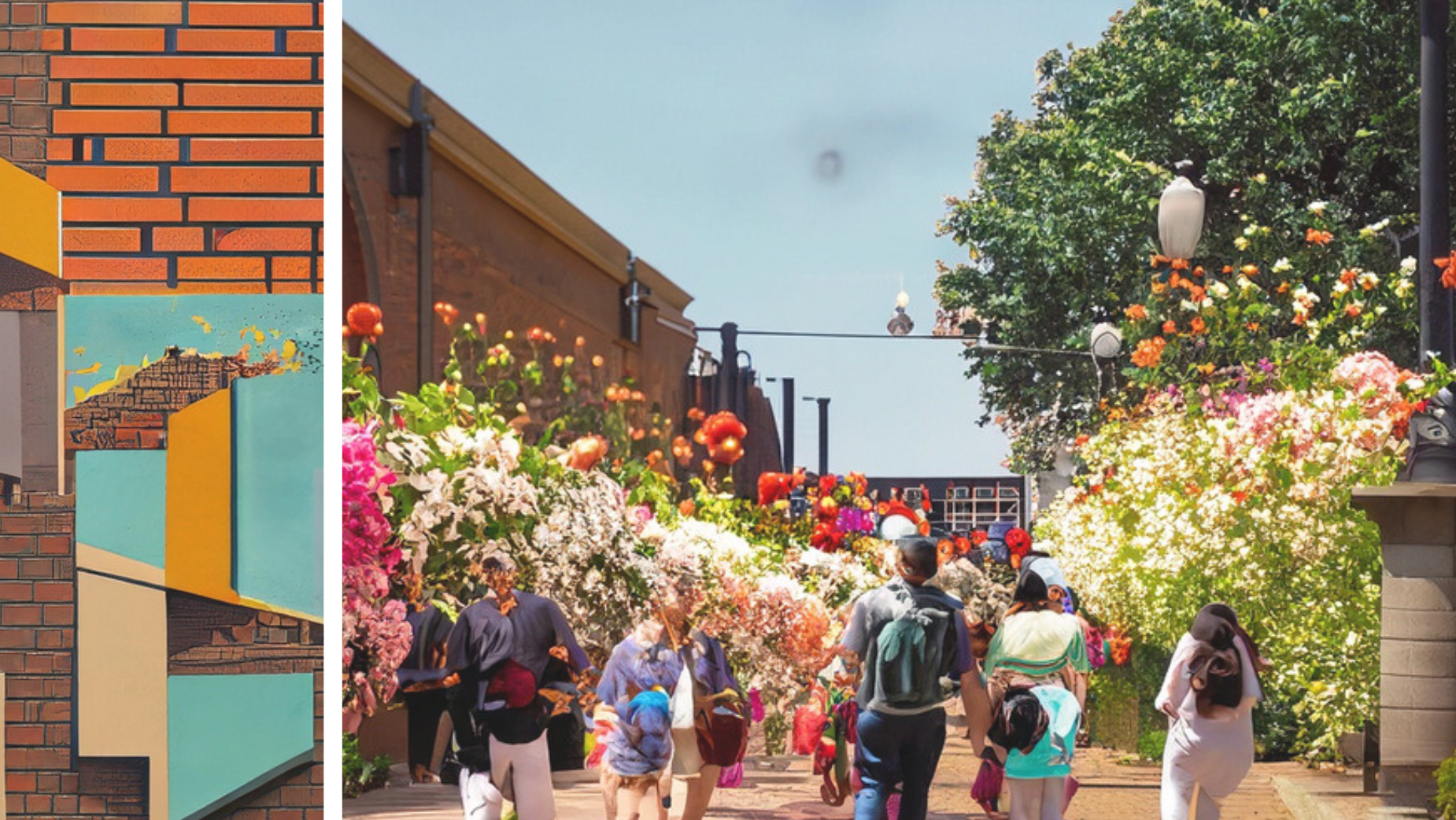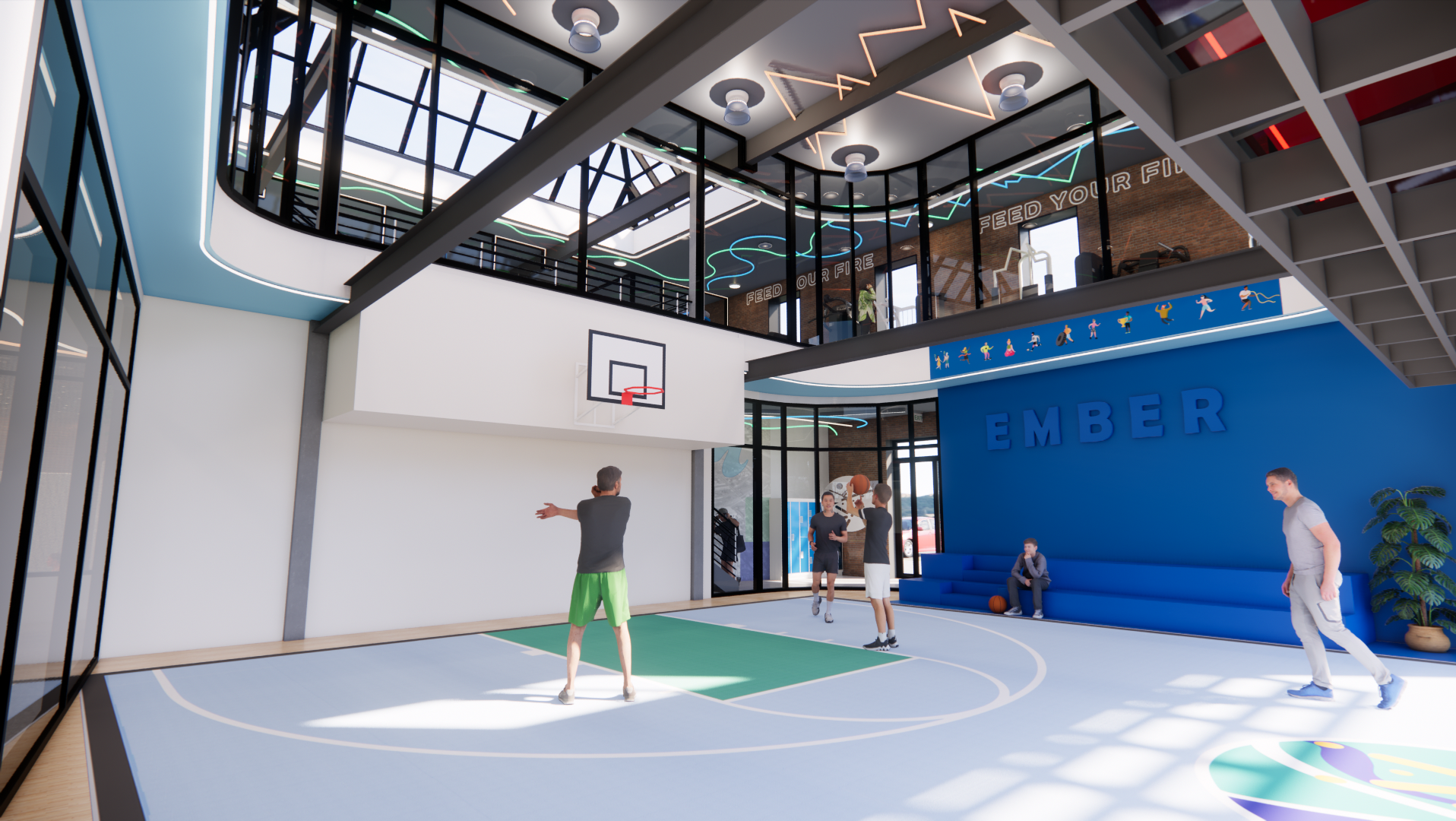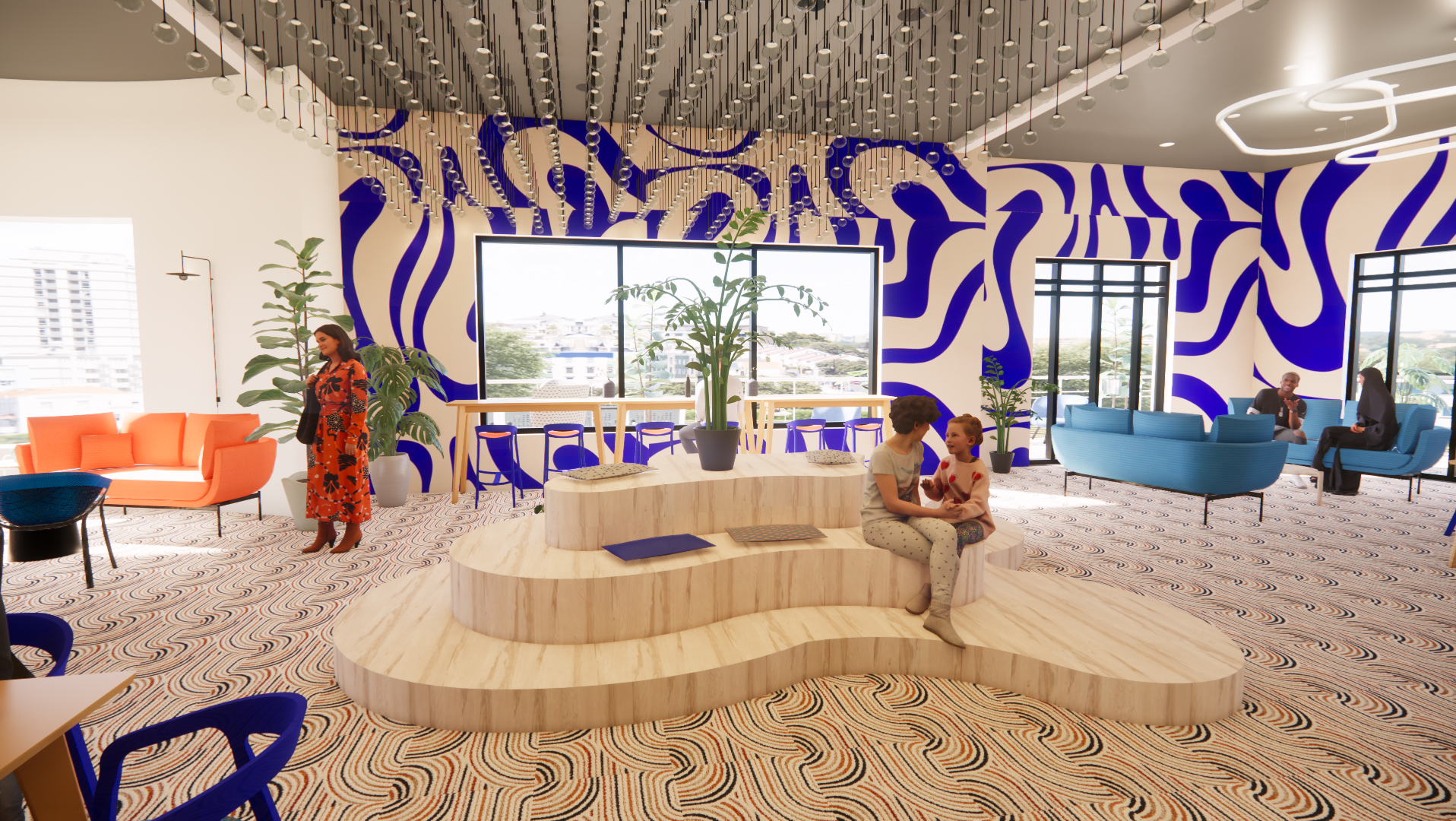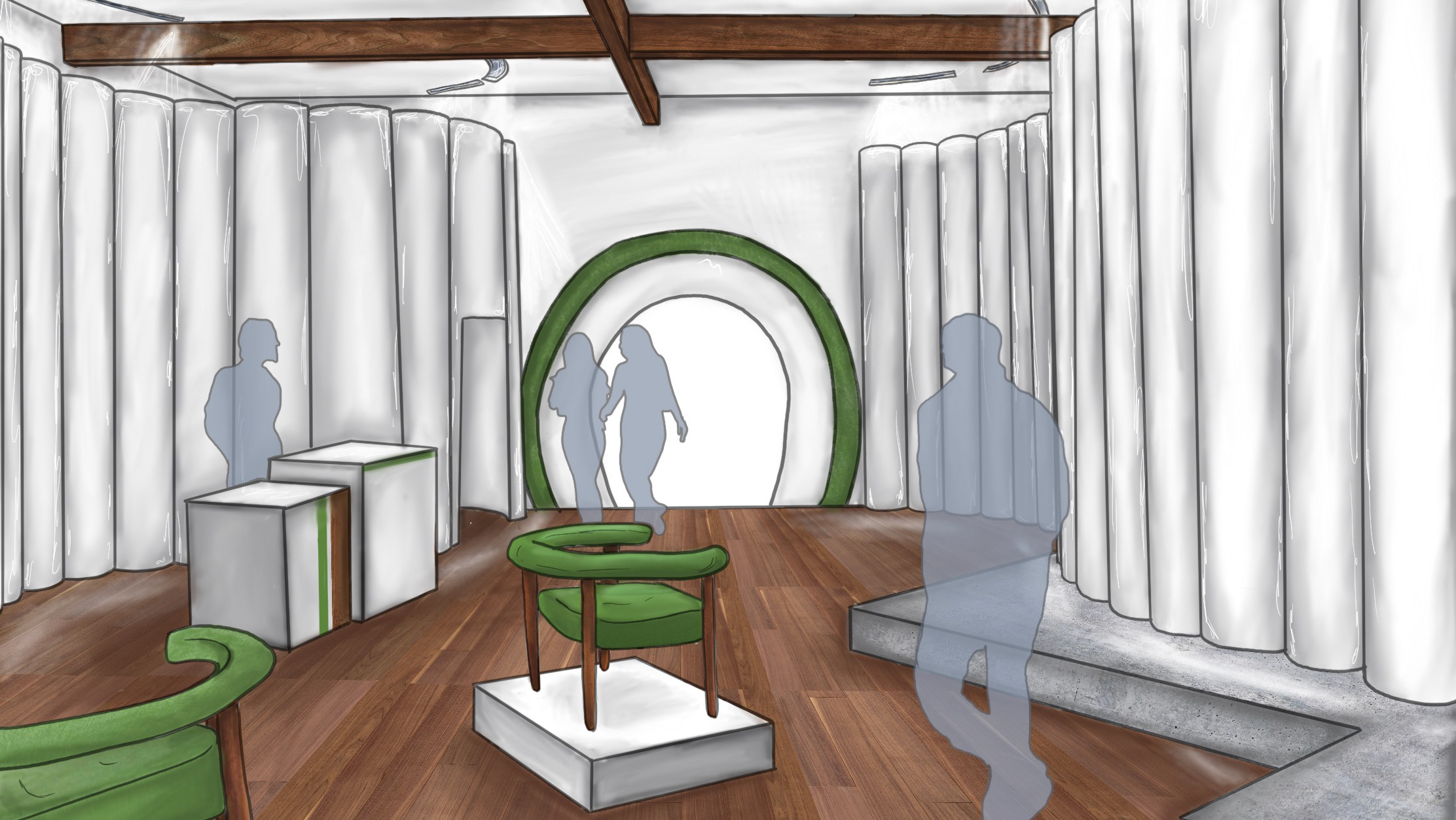Collaborative Design
Enriched with a foundation in design research, collaborative design is a vital tool to executing intentional, data-driven design that truly fulfills client needs. Direct input from stakeholders allows design decisions to root themselves in intention, communicating and functioning inline with project goals. Collaborative design and research are invaluable tools for a greater impact within interior design, giving layers and value to a project unlike any material or layout. Whether it's a fully executed workshop or a simple survey, data from users makes all the difference in the end result.
Klik USA's Corporate Headquarters was a new opportunity for brand expansion and client facing events, emphasizing the importance of the interior to tell their story. With a tight-knit employee pool, the story was told best by them with insights as to interior styles, company culture, branding elements, and more.
Through a design workshop, that story was able to unfold with visual and sensory images, insights, opinions, and long conversations of important factors from their perspectives. Interactive posters added in those conversations, posing questions and gut reactions to a variety of topics to help guide the design directions of the project.
Taking all the gathered data after the fact, a report was compiled to summarize and set the intention of the design moving forward and passed onto the stakeholders for their review and feedback to ensure the data is reflecting their thoughts. Using the data as a launching point, concept ideation and development begins the design process with an informed background to set up the end result for success.
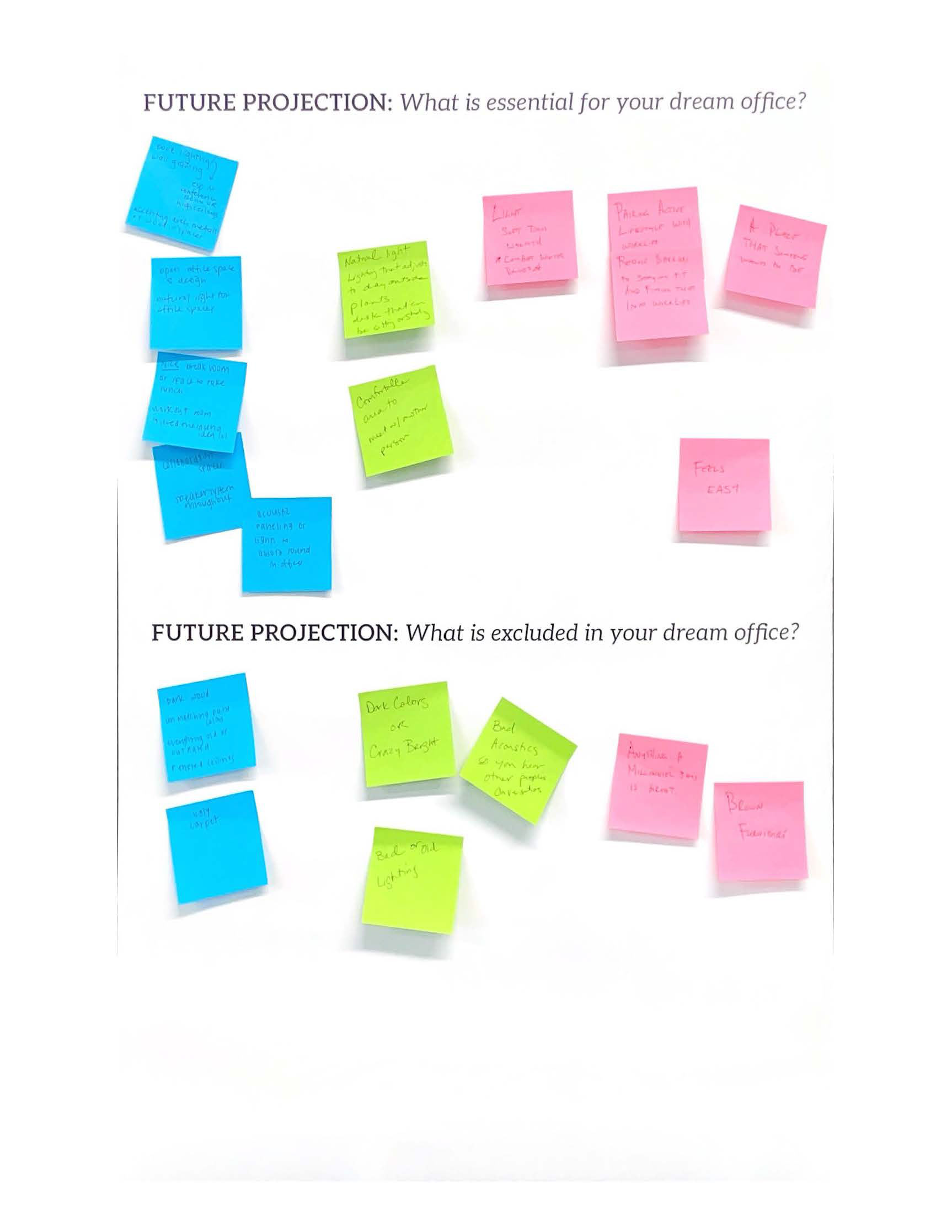
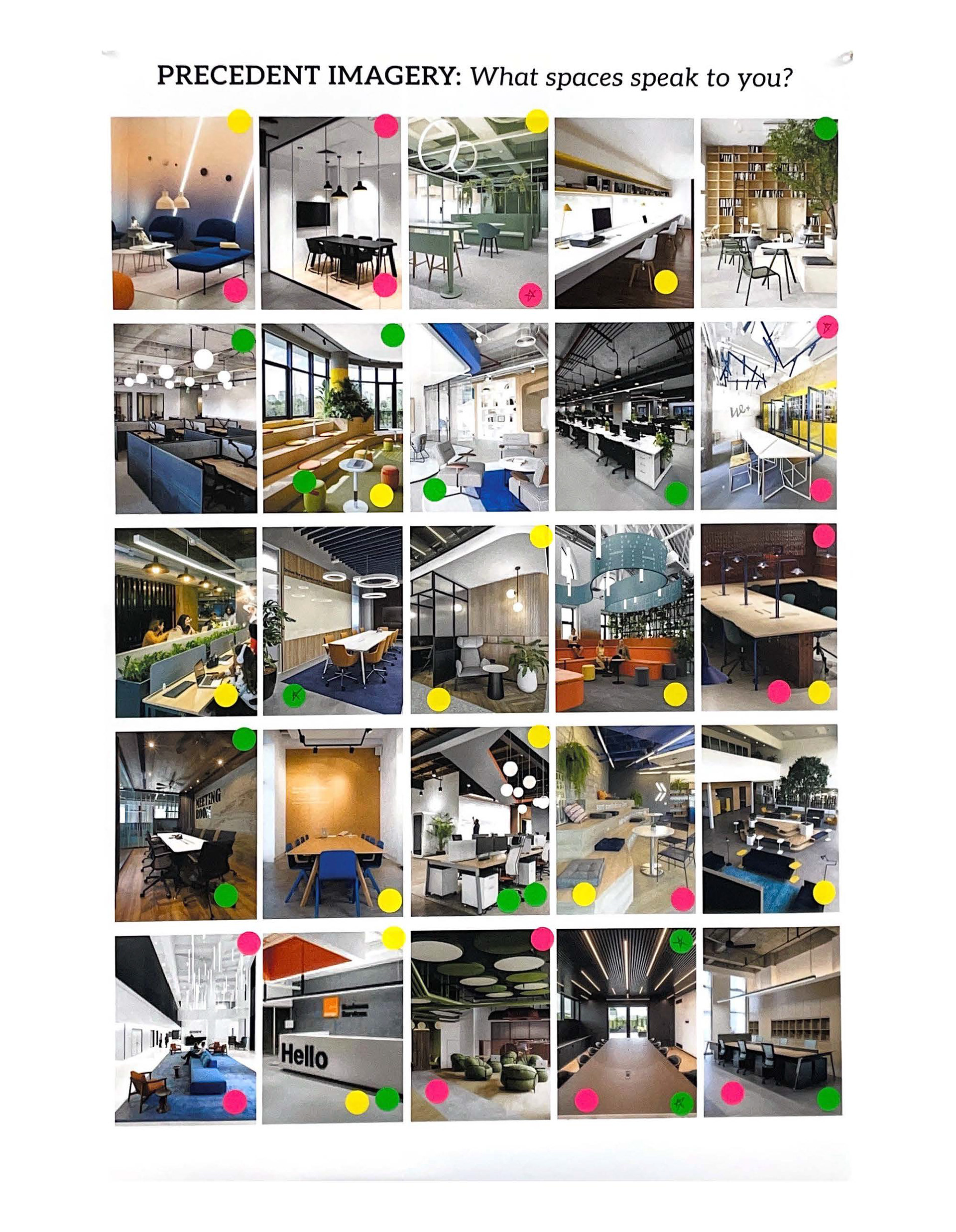
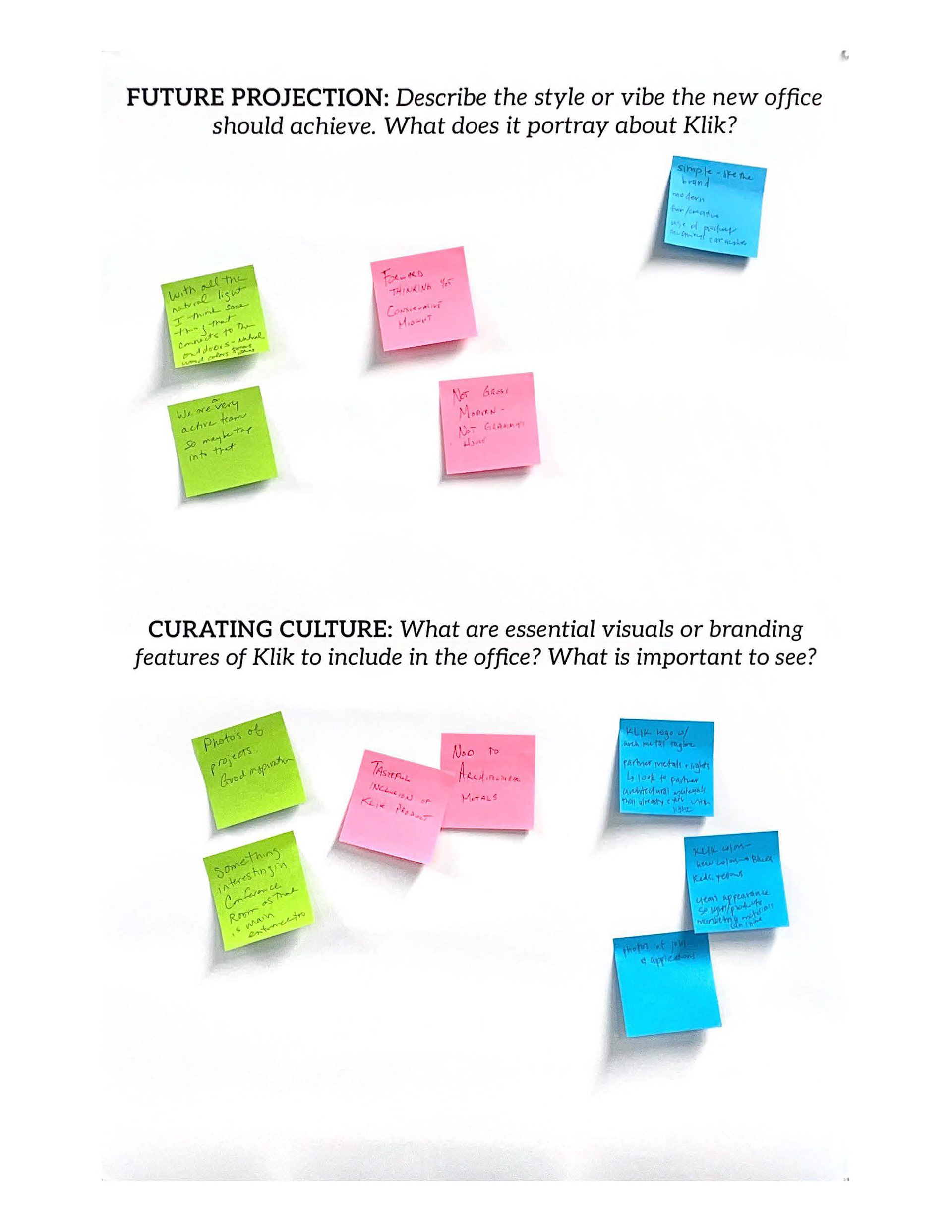
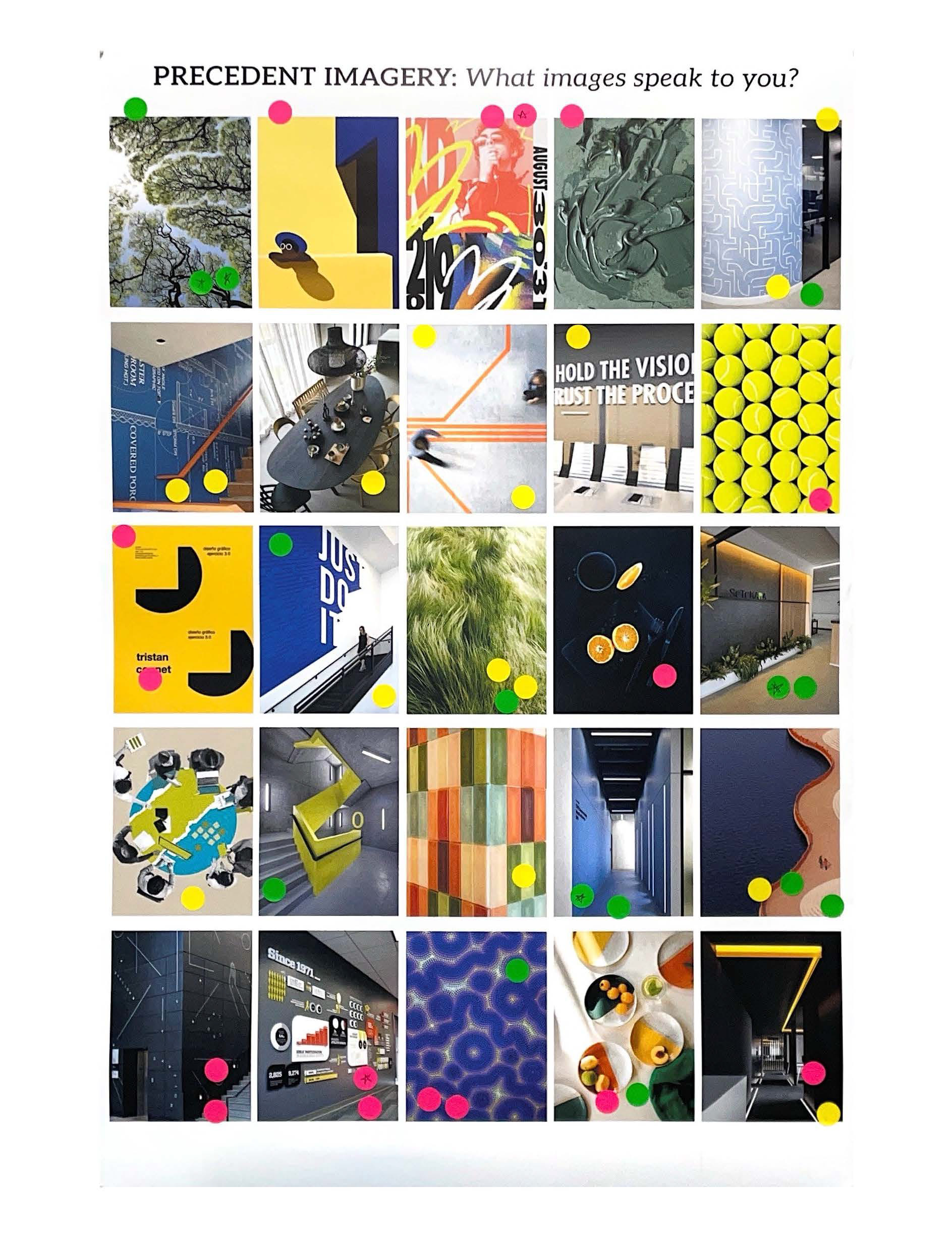
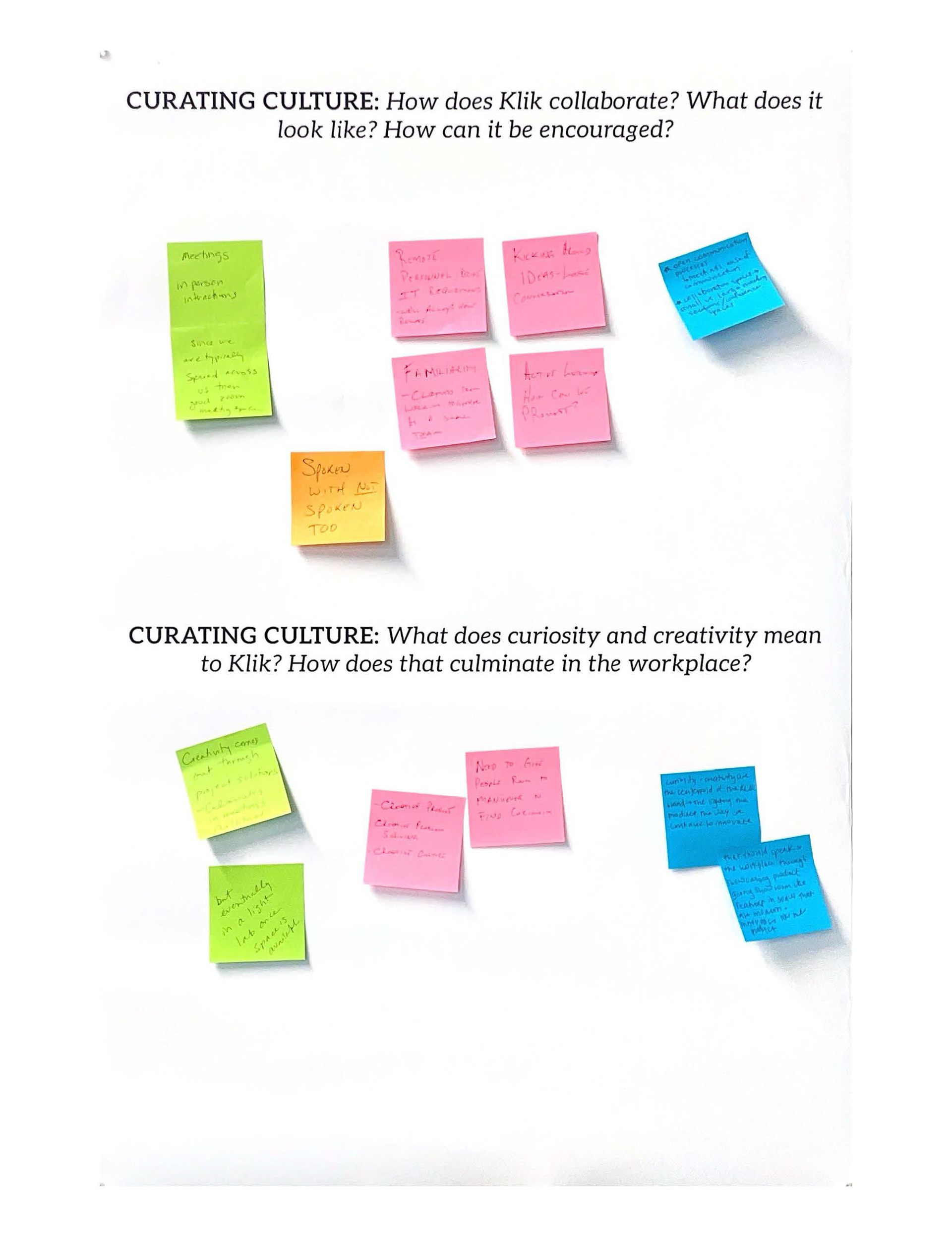
Design Workshop Posters
_____________________________________________________________________________________________________________________
During university, a design research project was conducted to evaluate synesthesia-like associations in participants without a synesthesia diagnosis. Using co-design methods, insights from 20+ college aged participants in a variety of creative and non-creative majors was compiled about their associations. The group's goals was to understand past and current experiences with synesthesia-like associations with our co-designers. The co-designers helped visualize their synesthesia-like associations between senses during a workshop, giving a better understanding of how our associations differ. Used methods included persona building, would-you-rather, color spectrums, and visualization activities. The primary insights were that the shapes of letters or numbers impact how they are perceived, social relationships with letters or numbers are closely tied with how prominent they are in our lives, and personal experiences are heavily relied upon when making associations.
Color Association Results from Co-Design Workshop
